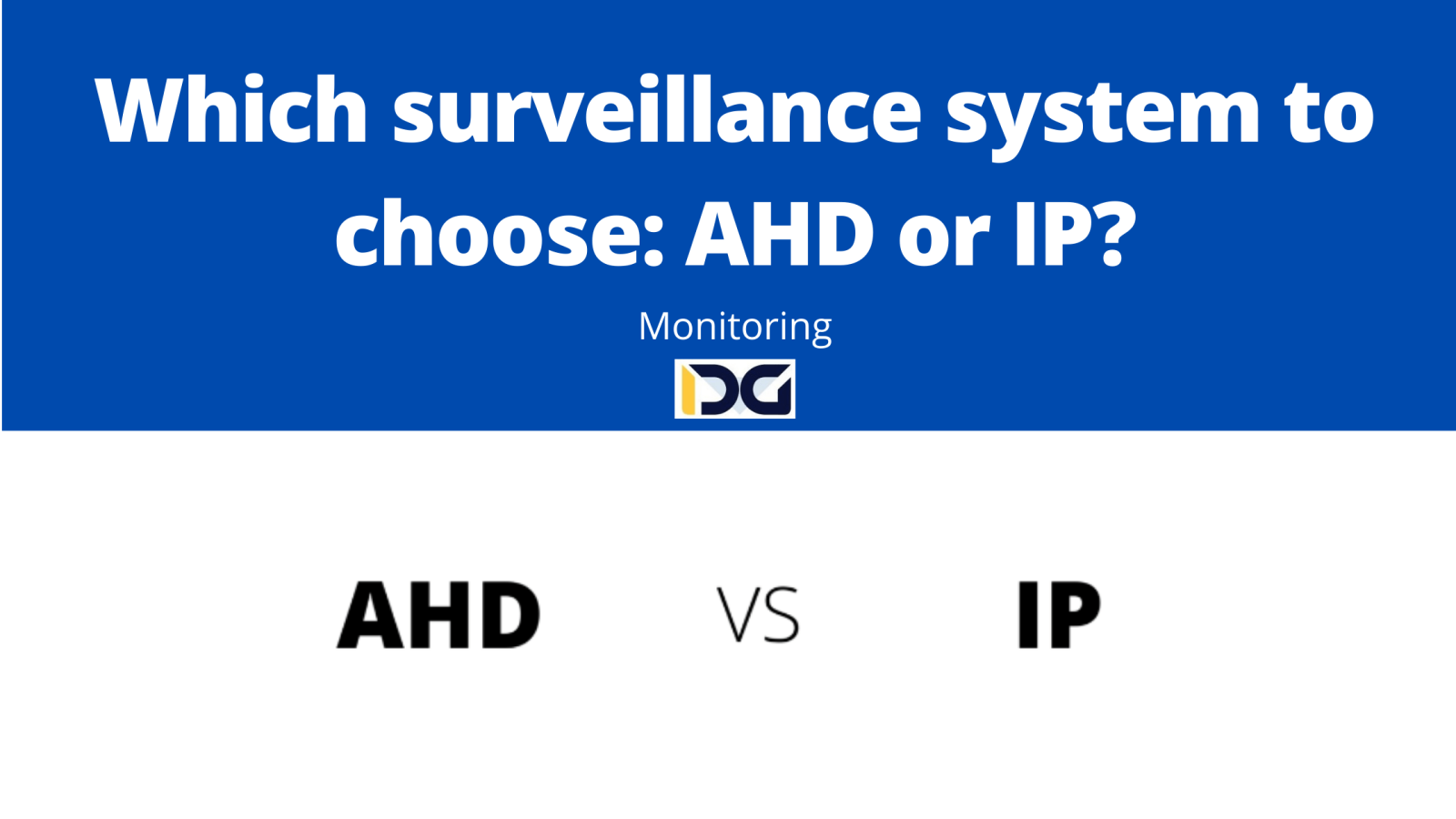
Deciding on the choice of a surveillance system, it is worth first familiarizing oneself with the advantages and disadvantages of each. AHD or IP? In this blog post, I will try to present both monitoring systems.
Which monitoring system is better? It is definitely difficult to determine as it depends on the specific application.
AHD monitoring, although slowly being replaced by IP systems, is still being produced by manufacturers such as Hikvision, Dahua, BCS, Kenik, and many others. Therefore, AHD monitoring kits are still highly popular.
It is mainly used in smaller installations where the main determinant is the price.
It is also perfect for replacing old equipment working on CVBS systems based on coaxial cables. The cost of the entire installation will only involve replacing the equipment, which is of significant importance.
IP-based monitoring installations are more scalable and future-proof.
They can be built on an existing structured cabling system.
They are well-suited for large installations.
They are also definitely better for demanding customers as they provide greater configuration options and advanced supervision and object selection features based on artificial intelligence.
Open this in UX Builder to add and edit content
Which monitoring system to choose: AHD or IP?
When deciding on a monitoring system, it is important to consider the advantages and disadvantages of each. In this blog post, I will provide an overview of both AHD and IP monitoring systems.
AHD Monitoring System Disadvantages:
- Limited image adjustment capabilities: Only some AHD camera models offer the option to adjust parameters directly in the camera’s OSD menu, unlike IP cameras, which have more extensive adjustment options.
- Requires compatibility with a hybrid recorder: Analog cameras cannot function autonomously, so for an AHD monitoring system to work properly, the cameras need to be connected to a compatible recorder.
- Limited compatibility with other security systems: AHD systems have limited compatibility with alarm systems, access control, and intercoms.
- More susceptible to electromagnetic interference: AHD systems may experience distorted images or reflections due to higher sensitivity to electromagnetic interference.
- Higher recorder costs: AHD systems require more powerful processors for image compression, resulting in higher recorder costs.
- Better suited for smaller installations such as home, office, or warehouse monitoring.
AHD Monitoring System Advantages:
- Stable transmission with real-time monitoring: AHD systems provide live monitoring with stable transmission and minimal delays.
- Long transmission distance: AHD systems can achieve maximum distances between the camera and recorder of up to 0.5 km when using coaxial cable.
- Compatibility with twisted pair cabling: AHD systems can utilize computer network cables with the use of dedicated transformers.
- Satisfactory resolutions: While analog systems cannot match the image resolution of IP technology, AHD systems can still offer resolutions up to 4K@8Mpx.
- Cost-effective: AHD-based CCTV systems are approximately 20-40% cheaper than comparable IP camera systems.
- Wide compatibility: AHD recorders can also support other HD standards like HD CVI, HD TVI, CVBS, and IP, allowing for flexible integration of cameras and recorders from different manufacturers.
IP Monitoring System Disadvantages:
- Higher implementation costs compared to analog systems, but offers significantly greater functionality.
- Potential delays in video transmission due to the packet-based nature of network video transmission. For example, there may be a 2-second delay in reaching the recorder. Additionally, IP cameras compress video internally, resulting in additional latency.
- Recommended to use devices from the same manufacturer due to variations in transmission protocols, even though most cameras support the open ONVIF standard.
- Requires network knowledge and expertise for configuration and installation, making it more suitable for companies with substantial networking knowledge.
- Adds additional load to the computer network.
IP Monitoring System Advantages:
- IP cameras do not require a separate recorder as they can directly record to a microSD card or cloud storage platforms such as Google Drive, OneDrive, or AWS.
- High-resolution capabilities: IP cameras can generate and transmit images ranging from Full HD 2Mpx to 32Mpx, thanks to advancements in image compression technology.
- Wireless connectivity options: IP systems can often connect wirelessly to WiFi networks, in addition to wired connections.
- Seamless integration with alarm systems or access control for comprehensive property protection.
- Easy system expansion by adding new cameras and configuring them on the network.
- User-friendly graphical interfaces for convenient recording parameter adjustments.
- Advanced image analysis capabilities, allowing for the configuration of automated alarm triggers and quick search of specific events in recordings.
- PoE technology provides power and signal transmission through a single cable, making it ideal for installations in hard-to-reach areas.
- Easy integration with existing network infrastructure (LAN, WAN, and WLAN) without major issues.
Ultimately, the choice between AHD and IP monitoring systems depends on specific requirements, budget, and preferences. Both systems have their advantages and disadvantages, and it is essential to evaluate them in the context of the intended application.
